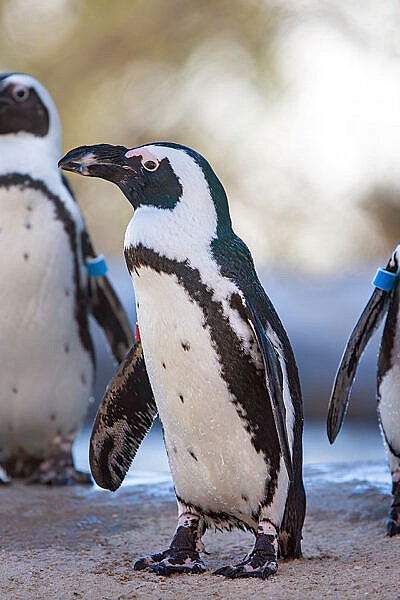IN PARTNERSHIP WITH CHILDREN’S HOSPITAL COLORADO –
Just like people, animals’ diets play a huge role in their overall health. In addition to enrichment activities, training sessions and environmental elements that support animals’ mental and physical wellness, planning their daily meals is a major focus for animal care teams.
As the holidays roll around each year, many people are looking forward to gatherings centered around helpings of sweet and savory treats. Food traditionally connects people at the holidays, and celebrations can present opportunities to try new foods and stray from the diet and exercise routines that keep our bodies operating at their best.

Our partners at Children’s Hospital Colorado offer advice for helping kids stay healthy during the holidays while enjoying seasonal or traditional treats and activities. CMZoo’s commissary, veterinary and animal care teams work together to follow similar practices to keep the animal residents at the Zoo healthy year-round.
Throughout the year, animal care teams lean on seasonally available items, like pumpkins in the fall or watermelons in the summer, to introduce novel foods to certain animals’ diets.
“The key is moderation, just like people practice around yummy holiday treats,” said Dr. Lizzy Arnett, CMZoo veterinarian. “It’s stimulating for our animals to receive novel foods, but we offer them sparingly and prioritize nutritious meals first.”
Just like humans, animals have individual preferences. That’s one of the things that makes keepers’ relationships with their animals so vital to each animal’s health and well-being. CMZoo’s African penguin flock is a great example of how species knowledge is supported by their care team’s connection with each individual.
Everyone knows penguins eat fish. Some might think that all penguins of the same subspecies would like the same kind of fish, but they would be wrong. The unique tastes of each CMZoo African penguin are on full display during daily penguin feedings in Water’s Edge: Africa. Guests can watch keepers offer four kinds of fish – herring, smelt, capelin and sprat – to accommodate CMZoo’s 16 picky penguins’ penchants.
“We usually know which type of fish to offer to each penguin, but changes in the seasons seem to inspire changes in their choices,” said Erin Henninger, Water’s Edge: Africa animal keeper. “For example, right now, Gary and Ichaboe like smelt, but they won’t eat herring. Safara and Rufaro are currently into herring, but won’t go near smelt. Most of the flock is choosing capelin right now and some will eat sprat occasionally. They have a hilarious way of telling you that you’re offering them the wrong fish. They shake their heads from side to side quickly or turn their faces away from it and wait – with intense side-eye stares – until you get it right.”
When a new animal arrives at CMZoo from another organization, its former care team is asked to provide an overview of its existing diet – main staples, favorite treats, high-value training rewards and things they don’t enjoy or haven’t responded well to in the past.
“To help a new arrival settle in, the veterinary team works with keepers and our commissary team to review their diet, order items we might not have and make any adjustments based on our experience with their species,” said Dr. Arnett. “Offering food to an animal is often a first opportunity to build a relationship, so we want to make sure they have their favorite treats and healthy meals.”
Again, it’s more important to support the animal as an individual, and not necessarily lean on what’s known about their species. Som, a female tree kangaroo who arrived at CMZoo last month, is a big fan of kale, so her keepers offer that leafy favorite as a way to calmly build trust with her during this foundational time. Tristan, CMZoo’s former male tree ‘roo who moved to Denver Zoo on a breeding recommendation from the Tree Kangaroo Species Survival Plan, despised kale. To each ‘roo, their own!
Atka, CMZoo’s 3-year-old male moose, arrived at Rocky Mountain Wild in July 2020 after being orphaned in the wild. He was only 8 weeks old when he came to CMZoo, so he was bottle fed by his keeper team. Although CMZoo had cared for moose before, he was CMZoo’s first nursing moose calf. Teams relied on the Association of Zoos and Aquariums network of expert knowledge and ever-evolving animal care science to create a formula and feeding schedule for the little guy.
“Currently, Atka’s diet consists of grain, some rye crackers for training, occasional algae from his pond, and a whole lot of browse, otherwise known as tree branches,” said Erika Furnes, animal keeper in Rocky Mountain Wild. “We’re one of the few zoos that is set up to care for moose, because we have a cooler climate, space to roam and swim, and a lot of native roughage.”
Atka’s team monitors his weight and body condition regularly, especially as he continues to grow. In the wild, moose snack on tree branches, bark, shrubs and aquatic vegetation. In human care, animal care teams provide items that species would eat in the wild and supplement with more readily available items, like grain. Moose are one of the few animals that eat pine needles, so guests will also see Atka snacking on the several pine trees in his habitat during the winter months.
CMZoo has a dedicated team of people who supply hundreds of pounds of browse daily for the various animals who need it. Browse, which includes tree logs, branches and leaves, is nutritious for many species. It’s also enriching for them to ‘work’ for their meals, by moving branches, stripping bark and chewing leaves.
Whether you’re gathering around a big bowl of leafy greens or snuggling up with a cup of hot cocoa, we encourage you to enjoy the holiday festivities in moderation – just like the animals at CMZoo!

